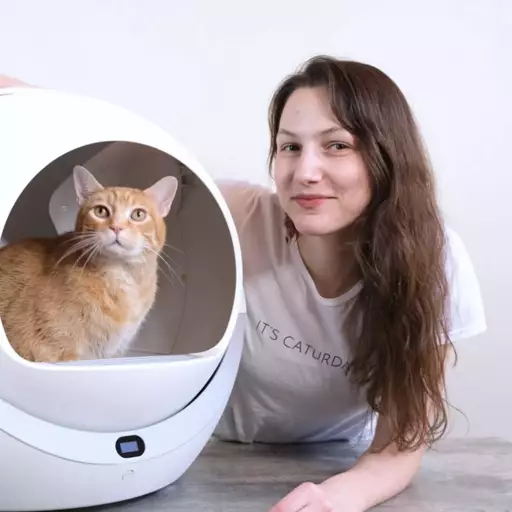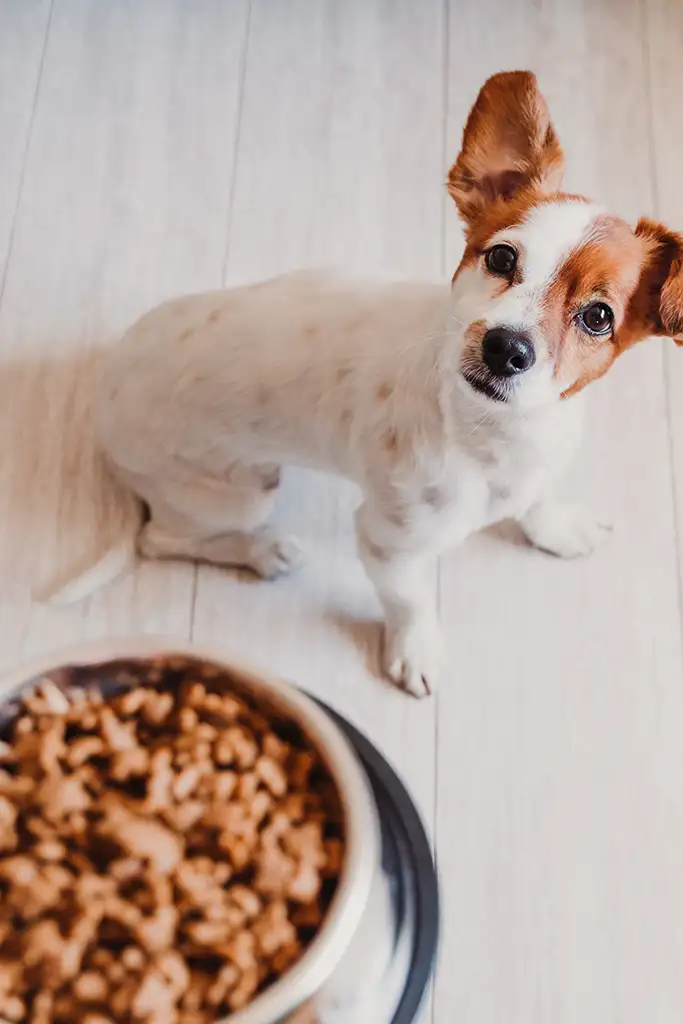Best Cat Food for Shedding
Quick Guide
- Does your cat shed too much?
- What is the best cat food to reduce shedding?
- Top 5 Best Cat Foods for Shedding
- Hound & Gatos Lamb Formula Grain-Free Canned Cat Food Review
- Redbarn Naturals Lamb Pate Skin & Coat Grain-Free Canned Cat Food Review
- ZiwiPeak Venison Canned Cat Cuisine Review
- Instinct by Nature’s Variety Grain-Free Real Duck Recipe Natural Wet Canned Cat Food Review
- Lotus Duck Pate Grain-Free Canned Cat Food Review
Does your cat shed too much?
Normally, shedding occurs when your cat loses dead hair and as part of your cat’s natural temperature regulation system. As the weather warms up and your cat spends more hours in the sun, their thick coat gradually sheds, allowing them to stay cool in hot weather.
These seasonal shedding cycles are most apparent among cats who live outside. Cats who live indoors in controlled environments tend to shed lightly year-round, but nevertheless see a shedding spike in the spring.
Particularly in the spring and fall, it’s normal to find your upholstery and clothing covered in cat hair. But if you find yourself pulling handfuls out of your cat’s coat during a petting session or even notice thinning or baldness, something is wrong. Though a constant vacuuming with a quality vacuum can keep your space clean, it would be nice if your little fur ball just expended less hair.
Quick Look : Top 5 Best Cat Food for Shedding
Signs that your cat’s shedding is a serious problem:
- They have a dull, dry coat
- Their fur comes out in clumps
- They have bald spots and raw skin
- They’re extremely itchy
If your cat has suddenly started to lose large amounts of fur or exhibits any of the above symptoms, their shedding problem could be an indicator of more serious underlying issues.
Here are a few causes of excessive shedding in cats:
- Stress
- Hormone problems
- Parasites
- Infections
- Diabetes and organ disease
- Allergies
- Poor nutrition
Obviously, diet can address a couple of these problems. If your cat has food allergies, eliminating dietary allergens could stop the shedding problem. And if poor nutrition is at fault, it’s relatively easy to implement dietary changes to correct those imbalances.
What is the best cat food to reduce shedding?
The best diet to reduce shedding is one that’s nourishing and species-appropriate. This type of diet’s positive effects ripple out over all bodily systems, including the skin and coat.
Ensure that your cat’s diet is nutritionally complete and balanced.
Most commercially-sold cat food is nutritionally complete and balanced, meaning that it won’t lead to nutritional imbalances or deficiencies in your cat’s body.
If you’re making your own cat food, ensure that you’re following a good recipe that provides the right levels of all the micronutrients and macronutrients your cat requires. It’s easy to allow your cat to become deficient in certain vitamins and minerals, including the vitamin A, vitamin E, and B vitamins that are crucial for supporting coat health.
Address potential food allergies.
If you believe allergies may be the cause of your cat’s shedding or poor coat condition, consider an elimination diet. By feeding your cat limited ingredient food centering around a novel protein, you can determine whether or not your cat’s shedding is an allergic reaction.
To do an elimination diet, choose a limited ingredient food with a single novel protein – that’s a protein source your cat hasn’t been exposed to before. This might be rabbit, quail, venison, or anything else your cat has never consumed.
If your cat’s shedding decreases after a few months on the elimination diet, reintroduce their old proteins one-by-one to confirm the allergy.
Choose foods with omega-3 fatty acids.
Omega-3 fatty acids can help to promote good skin and coat health. They can act as a natural anti-inflammatory that can help to minimize itchiness and scratching. And like any other fat supplement, they can help to keep your cat’s skin supple and their coat plush.
As obligate carnivores, cats are best suited to the omega-3 fatty acids EPA and DHA, which are found naturally in fish oil and krill oil.
You may choose a food with these omega-3 fatty acids built into the recipe, or you might opt to add them as a dietary supplement.
Choose a high-protein diet.
Remember that your cat’s natural diet is primarily protein with moderate-to-high amounts of fat and very little carbohydrate content. If you’re currently feeding your cat a dry food, switching to a canned food is a great first step towards correcting the carbohydrate concentration and pumping up the percentage of high-quality protein.
In What Dry Food Does to Your Cat’s Fur, Guillermo Diaz, MV, encourages cat guardians to “keep in mind that the “bricks” that build every single hair of a cat are the amino acids, which come from the breakdown of the proteins the cat ingests.”
In this sense, a high-protein diet is essential because it provides the building blocks of each hair on your cat’s body. As obligate carnivores, cats thrive on the amino acids found in animal tissue.
Top 5 Best Cat Foods for Shedding
Hound & Gatos Lamb Formula Grain-Free Canned Cat Food Review
Rating: 5 out of 5 stars
First 5 Ingredients: Lamb, Lamb Broth, Lamb Liver, Agar-Agar, Calcium Carbonate
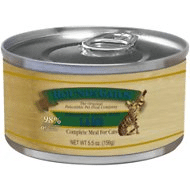
This canned food is rich in animal protein from lamb and nourishing animal fat, both of which promote a healthy coat. On a dry matter basis, the food is about 54.5% crude protein minimum and 36% crude fat minimum – a protein to fat ratio similar to that found in your cat’s natural whole prey diet. 100% of the protein comes from animal sources, meaning that it’s optimally nourishing for your carnivorous cat.
If your cat is suffering from food allergies, the lamb-based limited ingredient list could work in their favor. It doesn’t contain any common food allergens like chicken, beef, wheat, and dairy.
The food is made exclusively from high-quality ingredients with no artificial colors, flavors, or preservatives. It features a combination of muscle meat and organs without using animal by-products, ensuring that your cat only consumes highly-digestible protein. – Buy It
Pros
- Moisture-rich canned food supports overall health
- Contains hearty doses of animal protein and fat
- Made with a single source of animal protein
- Free from chemical preservatives, artificial ingredients, and animal byproducts
Cons
- Doesn’t contain added omega-3 fatty acids
- Expensive
Redbarn Naturals Lamb Pate Skin & Coat Grain-Free Canned Cat Food Review
Rating: 4.5 out of 5 stars
First 5 Ingredients: Lamb, Lamb Broth, Lamb Liver, Natural Flavors, Agar-Agar

This food was designed with skin and coat health in mind. It contains added salmon oil for omega-3 fatty acids and is rich in the vitamins and minerals that your cat requires.
If your cat has food allergies, this lamb food may be a good fit. It contains a single animal protein and is free from common allergens. There are no artificial colors, flavors, or chemical preservatives in this food.
The food contains trace amounts of peas, blueberries, cranberries, and alfalfa meal, but these plant ingredients are in negligible quantities. It’s rich in animal protein and fat with about 45.5% crude protein minimum and 43% crude fat minimum on a dry matter basis. – Buy It
Pros
- High in animal protein and fat
- Contains salmon oil for omega-3 fatty acids
- Hydrating for overall health
- Free from chemical preservatives, artificial ingredients, and animal by-products
Cons
- Contains several plant ingredients
ZiwiPeak Venison Canned Cat Cuisine Review
Rating: 4.5 out of 5 stars
First 5 Ingredients: Venison, Venison Broth, Venison Liver, Venison Lung, Venison Heart
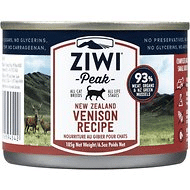
Compared to the average dry cat food, which may be 40% carbohydrates, this is a surprisingly carnivore-appropriate product. 93% of the total recipe is meat, organs, bones, and green-lipped mussels.
If you suspect that your cat’s shedding is associated with a food allergy, this single-protein food may be a good choice. It’s made with venison, which is a novel protein and usually gentle on the system. It’s free from potentially irritating ingredients like artificial colors, flavors, and chemical preservatives.
On a dry matter basis, this food is about 40% crude protein minimum and 20.4% crude fat minimum. You may want to supplement this food with fish oil. – Buy It
Pros
- Made with 93% fresh meat, organs, bones, and green lipped mussel
- Moisture-rich to support overall health
- Rich in animal protein
- Free from chemical preservatives, artificial ingredients, and animal by-products
Cons
- One of the most expensive foods on the market
- Doesn’t contain added omega-3 fatty acids
Instinct by Nature’s Variety Grain-Free Real Duck Recipe Natural Wet Canned Cat Food Review
Rating: 4 out of 5 stars
First 5 Ingredients: Duck, Turkey Liver, Duck Broth, Ground Flaxseed, Montmorillonite Clay
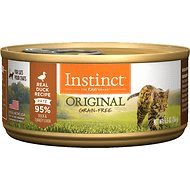
This food is rich in animal protein, with duck and turkey liver representing 95% of the total recipe. The guaranteed analysis indicates that the food is about 52% crude protein minimum and 31% crude fat minimum on a dry matter basis.
It’s supplemented with menhaden fish oil, an excellent source of omega-3 fatty acids.
On the negative side, the remaining 5% of the recipe includes a variety of plant ingredients, including ground flaxseed, peas, carrots, and trace amounts of artichokes, cranberries, pumpkin, tomato, blueberries, broccoli, cabbage, kale, and parsley. These ingredients naturally round out the nutrient profile of the food, but they’re not species-appropriate.
Unless your cat has sensitivities to duck or turkey, this food can help to alleviate food allergy symptoms. It’s free from the most common food allergens, including chicken, beef, wheat, and dairy. – Buy It
Pros
- Highly digestible formula is 95% duck and turkey liver
- Free from the most common cat allergens
- Rich in omega-3 fatty acids
- A high-moisture food
Cons
- Contains numerous plant ingredients
Lotus Duck Pate Grain-Free Canned Cat Food Review
Rating: 4 out of 5 stars
First 5 Ingredients: Duck, Duck Broth, Pork Liver, White Fish, Peas

This food contains several animal-sourced ingredients – duck, pork, whitefish, clams, and eggs. It’s not a limited ingredient food and might not be the best choice for allergic cats.
That said, it’s a meat-based and protein-rich recipe containing high-quality muscle meat and organs.
At about 40% minimum crude protein and 22% minimum crude fat, this food is relatively high in animal protein with low-to-moderate fat content. It’s supplemented with salmon oil as a nourishing source of omega-3 fatty acids and also gets some of its fat from olive oil, which isn’t a species-appropriate fat source for cats.
Olive oil isn’t the only plant ingredient in this recipe. The food contains agar-agar as a binder, along with peas, blueberries, cranberries, carrots, ground whole flaxseed, and asparagus. – Buy It
Pros
- Moisture-rich food
- Contains omega-3 fatty acids from salmon oil
- Low cost compared to similar products
- Free from artificial colors, flavors, and chemical preservatives
Cons
- Contains numerous fruits and vegetables
- Not a limited ingredient formula

